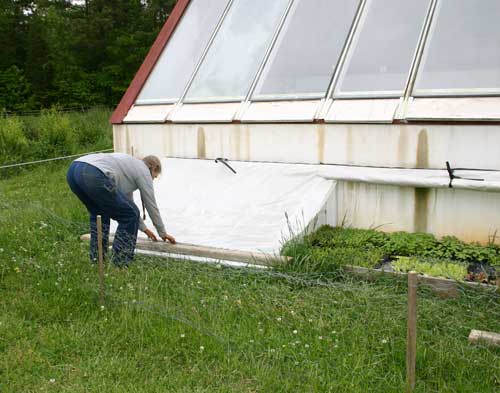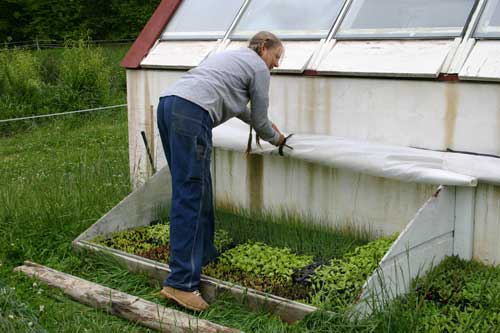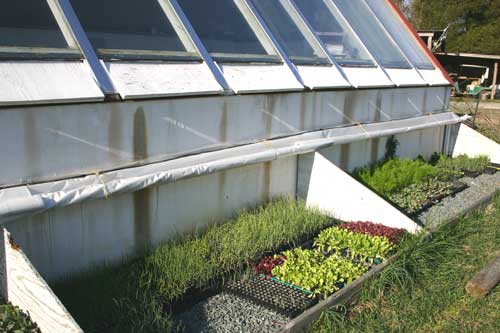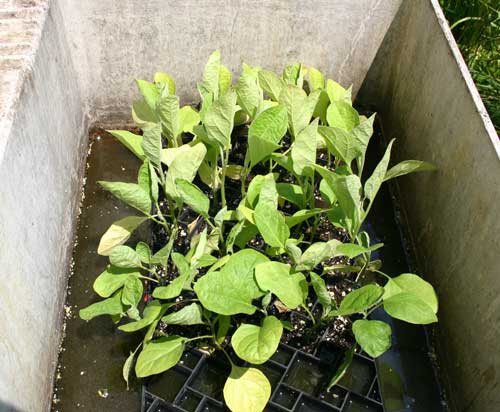Perry-Winkle Farm
go.ncsu.edu/readext?177726
en Español / em Português
El inglés es el idioma de control de esta página. En la medida en que haya algún conflicto entre la traducción al inglés y la traducción, el inglés prevalece.
Al hacer clic en el enlace de traducción se activa un servicio de traducción gratuito para convertir la página al español. Al igual que con cualquier traducción por Internet, la conversión no es sensible al contexto y puede que no traduzca el texto en su significado original. NC State Extension no garantiza la exactitud del texto traducido. Por favor, tenga en cuenta que algunas aplicaciones y/o servicios pueden no funcionar como se espera cuando se traducen.
Português
Inglês é o idioma de controle desta página. Na medida que haja algum conflito entre o texto original em Inglês e a tradução, o Inglês prevalece.
Ao clicar no link de tradução, um serviço gratuito de tradução será ativado para converter a página para o Português. Como em qualquer tradução pela internet, a conversão não é sensivel ao contexto e pode não ocorrer a tradução para o significado orginal. O serviço de Extensão da Carolina do Norte (NC State Extension) não garante a exatidão do texto traduzido. Por favor, observe que algumas funções ou serviços podem não funcionar como esperado após a tradução.
English
English is the controlling language of this page. To the extent there is any conflict between the English text and the translation, English controls.
Clicking on the translation link activates a free translation service to convert the page to Spanish. As with any Internet translation, the conversion is not context-sensitive and may not translate the text to its original meaning. NC State Extension does not guarantee the accuracy of the translated text. Please note that some applications and/or services may not function as expected when translated.
Collapse ▲Photos and text by Debbie Roos, Agricultural Extension Agent.
Transplant Production
|
Page 2
|
||||
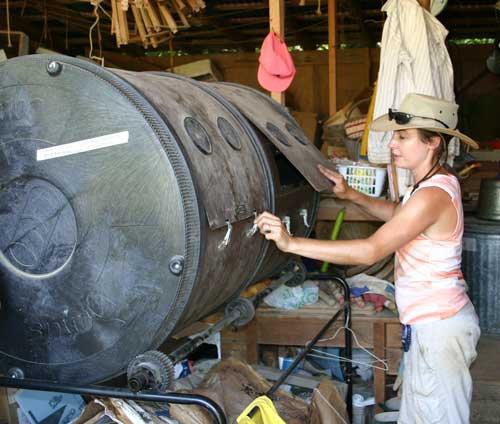
A healthy crop starts with a healthy transplant. Most vegetables at Perry-winkle farm are transplanted except for beans, okra, carrots, beets, and salad greens which are are direct-seeded. The majority of the flowers are also transplanted, except for zinnias and sunflowers.
In the photo above, Perry-winkle farmworker Chris opens the compost tumbler which they use to mix their own special blend of potting mix. They augment commercial soilless mix (Fafard #2) with vermicompost (worm castings), rock phosphate, and bloodmeal for their transplant mix. Perry-winkle employs 3-5 part-time farmworkers throughout the season.
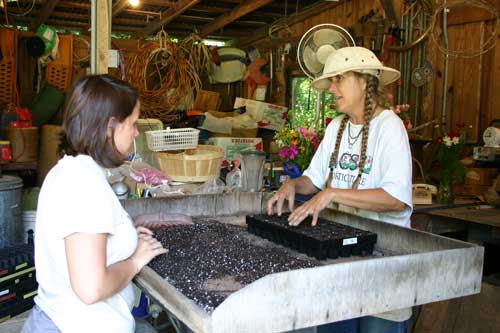
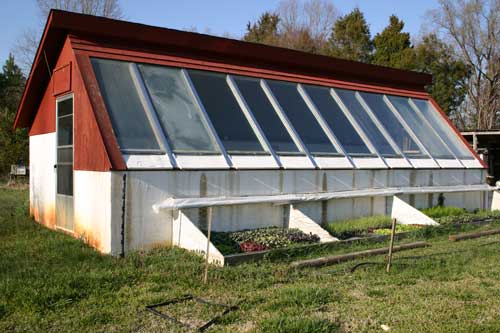
All the transplants at Perrywinkle are grown in this passive solar greenhouse constructed from Hebel block – aerated autoclaved concrete that is very strong and lightweight with excellent insulating properties.
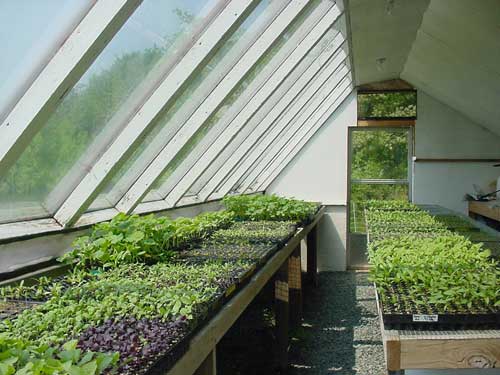
Greenhouse interior in early May. No supplemental heat is needed, even during the winter when day-time interior temperatures can reach in the 80s on a sunny day. At night the greenhouse keeps temperatures above freezing.
Summer interior temperatures can be kept comparable to the outdoors by opening vents in and over the doors and with a series of vents across the front of the house at bench height.
The roof and glass sides of the greenhouse were oriented so that the low angle of the winter sun would fully penetrate the interior. In summer, the house is kept cooler since the high angle of the sun does not reach all the way into the interior.
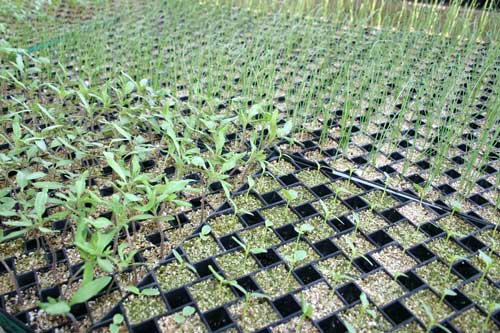
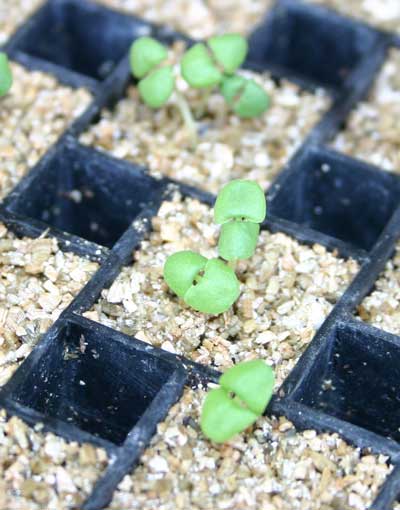


Close-up of underside of eggplant leaf with aphid mummies.

